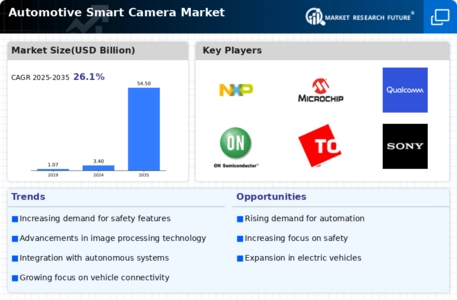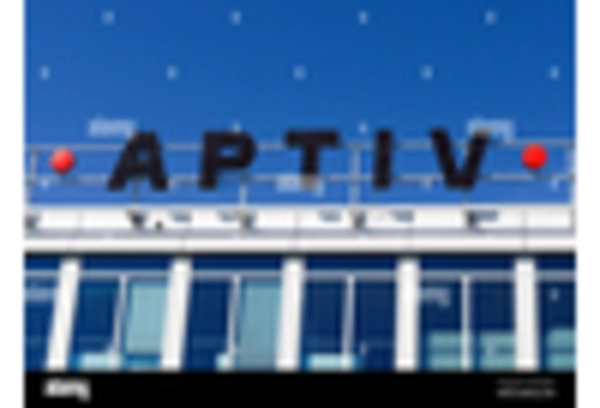Government Regulations and Incentives
Government regulations and incentives are playing a crucial role in shaping the Automotive Smart Camera Market. Many countries are implementing stringent safety standards that require the integration of advanced safety technologies in vehicles. These regulations often include mandates for features such as collision avoidance systems, which rely heavily on smart camera technology. Additionally, various governments are offering incentives for manufacturers to adopt these technologies, further stimulating market growth. As compliance with these regulations becomes increasingly necessary, the Automotive Smart Camera Market is likely to expand, driven by both regulatory requirements and the associated financial incentives.
Growth of Autonomous Vehicle Technology
The growth of autonomous vehicle technology is a transformative factor for the Automotive Smart Camera Market. As the automotive sector moves towards greater automation, the reliance on smart cameras for navigation, obstacle detection, and decision-making becomes paramount. Industry forecasts indicate that the market for autonomous vehicles will expand rapidly, necessitating advanced smart camera systems to ensure safety and efficiency. This trend not only enhances the functionality of vehicles but also drives innovation within the Automotive Smart Camera Market, as manufacturers strive to develop sophisticated camera solutions that can support the complex requirements of autonomous driving.
Increasing Consumer Awareness of Vehicle Safety
Consumer awareness regarding vehicle safety is a critical driver for the Automotive Smart Camera Market. As more individuals prioritize safety features in their purchasing decisions, the demand for vehicles equipped with smart cameras is likely to rise. Surveys indicate that a significant percentage of consumers are willing to pay a premium for vehicles that offer enhanced safety technologies. This shift in consumer behavior is prompting automakers to invest in smart camera systems, thereby fostering growth in the Automotive Smart Camera Market. The emphasis on safety is not only a market trend but also a response to regulatory pressures aimed at reducing road accidents.
Technological Advancements in Imaging Solutions
Technological advancements in imaging solutions are significantly influencing the Automotive Smart Camera Market. Innovations in camera resolution, processing power, and image recognition algorithms are enhancing the capabilities of smart cameras. For instance, the introduction of high-definition cameras and advanced sensor technologies allows for improved object detection and recognition, which are crucial for safety applications. Market data suggests that the integration of these advanced imaging solutions is expected to drive the growth of the Automotive Smart Camera Market, as manufacturers seek to incorporate cutting-edge technology into their vehicles to meet consumer expectations and regulatory standards.
Rising Demand for Advanced Driver Assistance Systems
The Automotive Smart Camera Market is experiencing a notable surge in demand for advanced driver assistance systems (ADAS). This trend is largely driven by the increasing emphasis on vehicle safety and the need for enhanced driving experiences. According to recent data, the ADAS market is projected to grow significantly, with smart cameras playing a pivotal role in this evolution. These systems utilize smart cameras to provide features such as lane departure warnings, adaptive cruise control, and automatic emergency braking. As consumers become more aware of the benefits of these technologies, the adoption of smart cameras in vehicles is likely to accelerate, thereby propelling the Automotive Smart Camera Market forward.


















Leave a Comment